
About Program X and why we have been awarded for this initiative
Fast Company recently included BBVA AI Factory in the list of the world’s 100 best workplaces for innovators. We came first in the category of small companies (fewer than 100 employees), and number 40 in the overall ranking. These awards are given out annually and acknowledge organizations, leaders and teams who have nurtured cultures of innovation in the workplace.
As part of the evaluation phase, the jury1 assessed aspects such as innovation funding, company programs and processes, and workplace culture. Particular emphasis was placed on initiatives relating to diversity, equality and inclusion (see methodology). One of the key points of the application process was to provide a detailed example of one significant innovation that originated from a surprising source within the organization, and to identify the resulting outcomes. In our case, we presented the results of the first Program X project launched last year. This BBVA AI Factory internal initiative was conceived with the purpose of converting ideas that arise from their own colleagues into prototypes or demonstrators which can then be used by other teams in order to verify the feasibility of the idea.
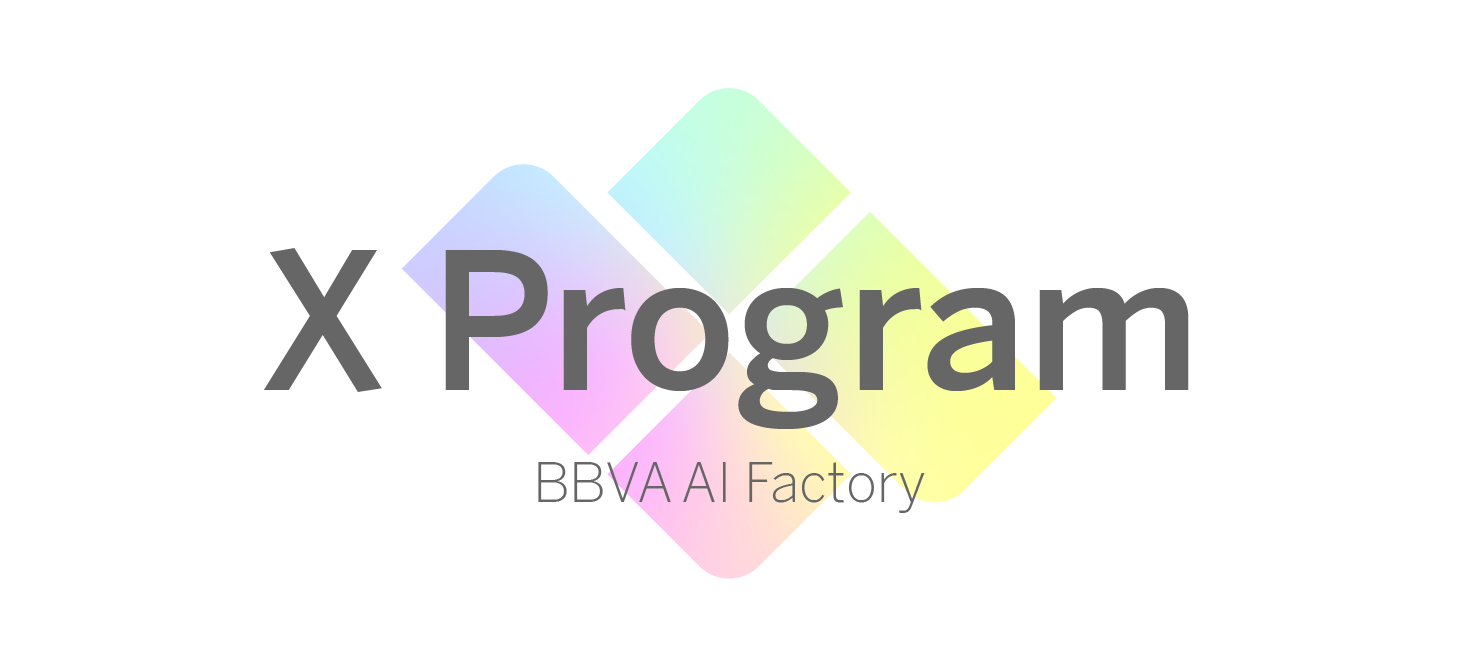
At BBVA AI Factory we create data products for different business areas of the bank in order to complement the value proposition we offer our customers. For this reason, we work in multidisciplinary teams aligned with a target business area so as to boost focus and motivation. However, it is quite usual for the different programs to share certain common needs, such as data labeling tasks, or that new ideas that may arise not linked to a specific program. A group of workmates expressed an interest in exploring opportunities outside the scope of their teams in order to build quicker prototypes2 and to provide a solution for common challenges. In this way, Program X opens up a new workspace where the objective is to experiment, implement and test the initial phases of a novel product idea from the data, thus following the philosophy of “validate an idea by starting to make it”.3
In actual fact, Program X is a succession of different projects since one of its main aspects is to establish temporary teams that will work on the development of specific prototypes. Once a prototype has been presented, the team is then disbanded and the idea-gathering phase begins again. Indeed, internally we refer to these projects as X1, X2, and so on. In any case, a Program X must meet the following requirements:
- A multi-project team of three or four data scientists is assembled to work on an identified innovation opportunity.
- This idea or innovation opportunity cannot be part of the backlog of the ongoing projects, but may potentially has an impact in those.
- The team works for two to three months to develop a prototype.
- This prototype must be a “tangible artifact”.
When we refer to a tangible artifact, we mean that the result of project X should be a usable component rather than a mock-up or a report. Examples of a component can be a demo, a front-end interface to some functionality, or a code module that packages a functionality in a reusable way. The goal of the demonstrator is not to be productive or directly integrated, but to be functional. In this way, it is ready to be adopted by other teams who will continue developing the demonstrator if this is seen to be useful. In other words, to create a minimum viable product (MVP).
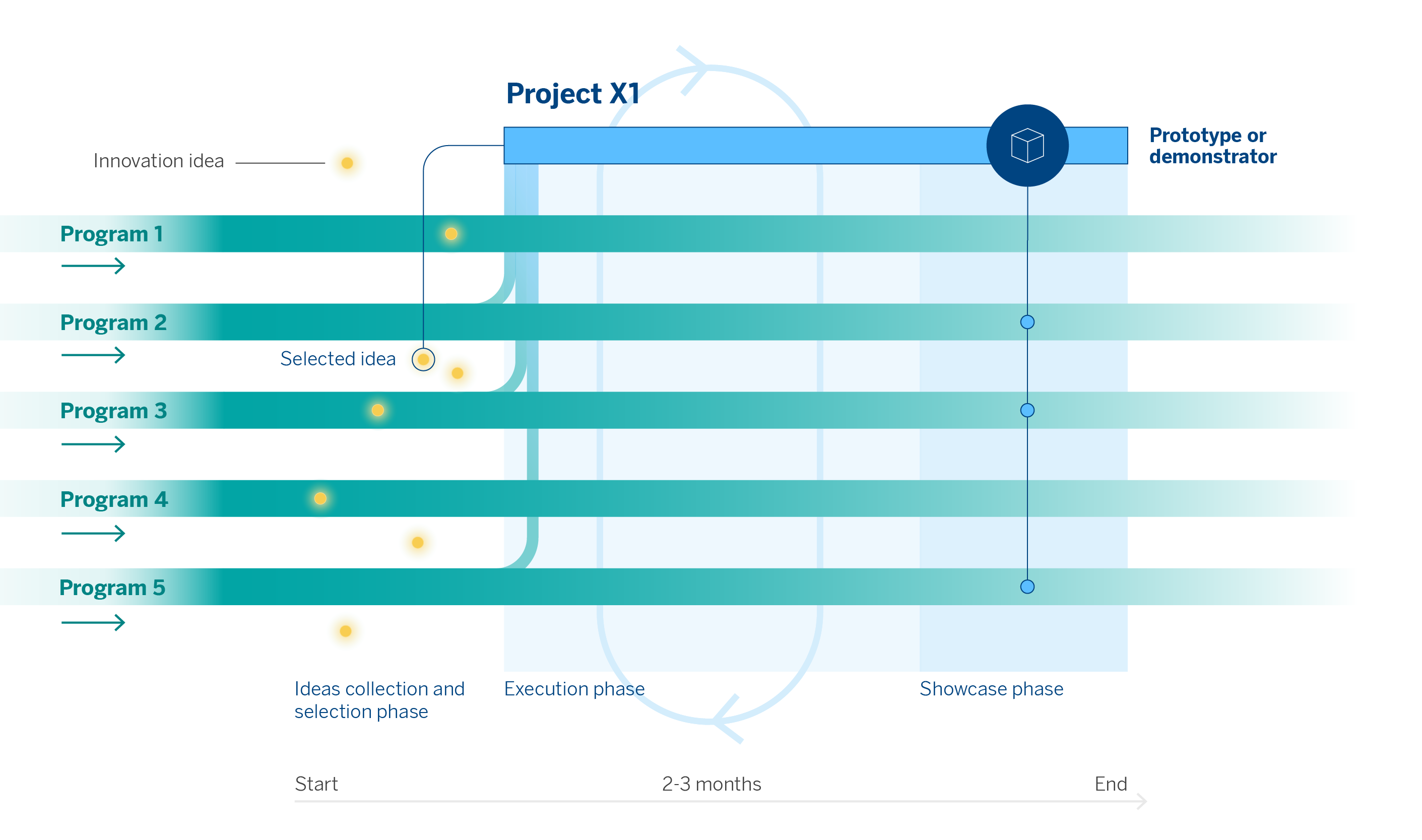
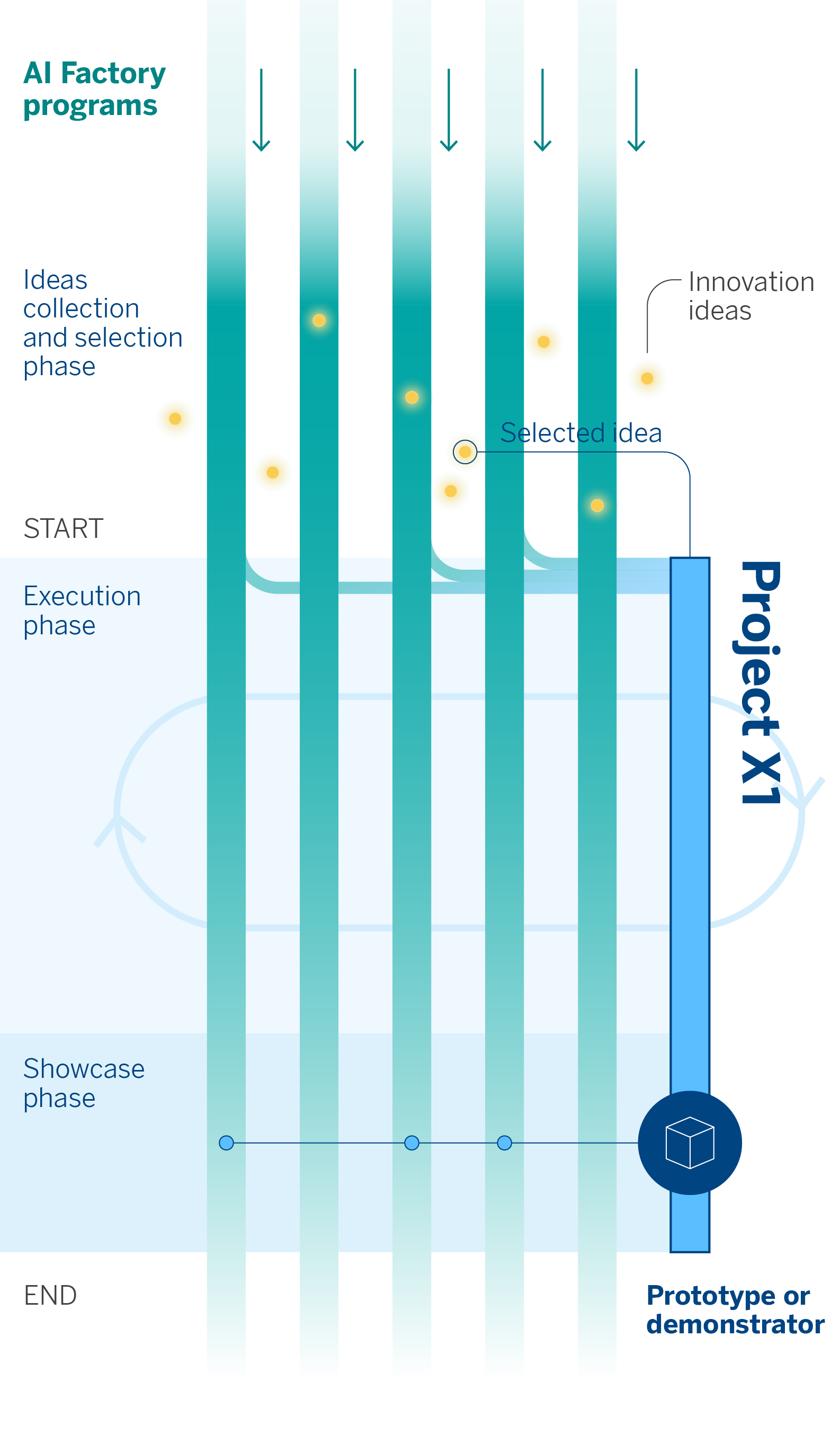
A clear example of these prototypes or artifacts is Annotify, the outcome of the first edition of the X Program. This tool allows us to tag data faster using active learning, adapted to the type of data we work with and to the models already developed. In a recently published article, we explained in detail how this tool works.
Before proposing this solution, several teams had detected problems with data labeling and agreed that there was no satisfactory tool available that met their needs. Thus, the first BBVA AI Factory Program X tackled this challenge as it represented a common need for several teams in the company. For this particular case, a team of four people worked together on designing a data labeling tool prototype. This goal was clear because everyone had already experienced the same need within their own teams. In other cases, however, the focus is more open to exploration and to learning from failure. Such an approach is more present here than in the other programs.
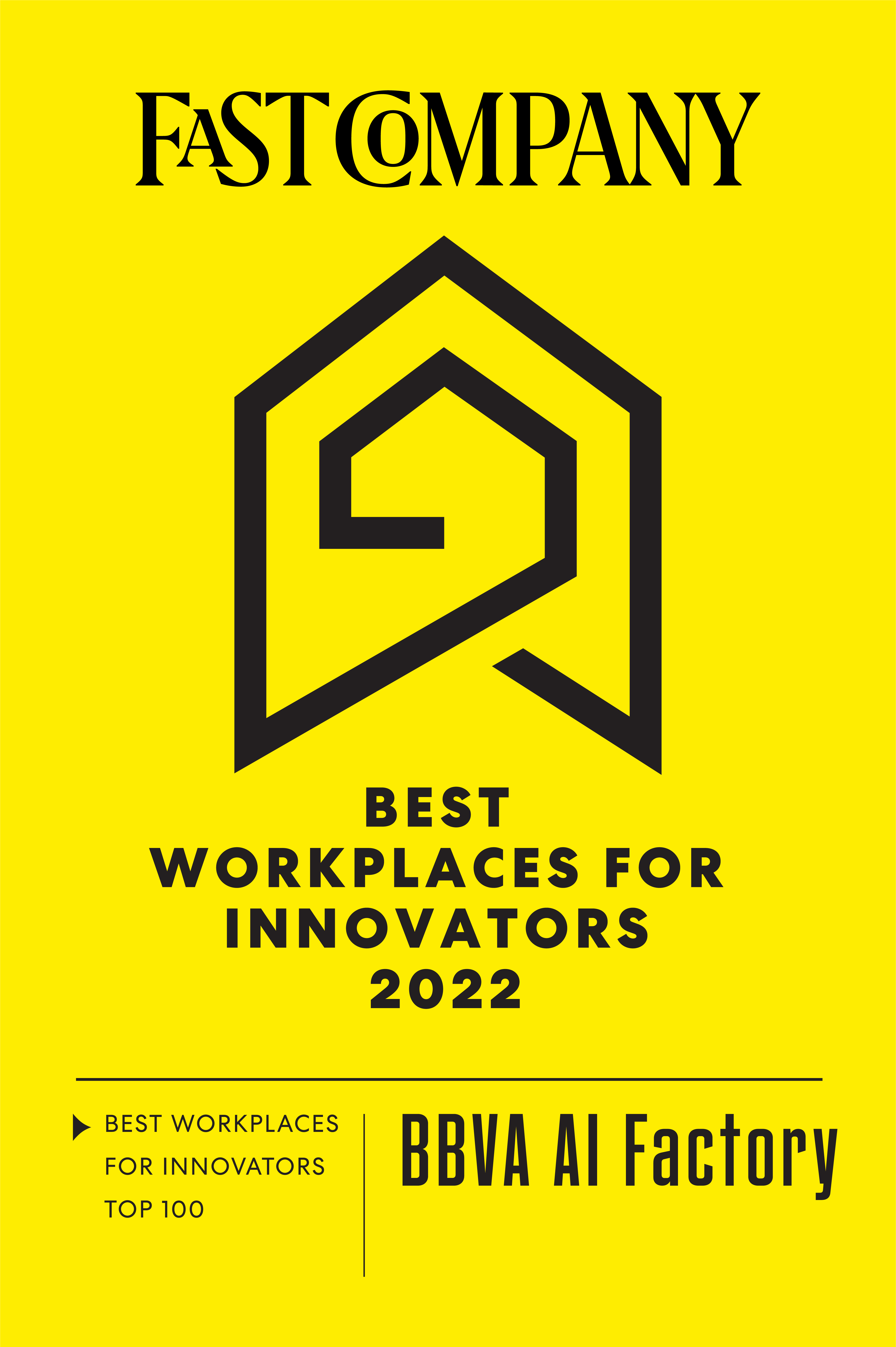
|
Annotify is the first prototype developed within the “X Program”, an internal exploration and innovation initiative awarded by Fast Company, which extends its recognition to BBVA AI Factory as one of the 100 Best Workplaces for Innovators, and the winner in the category of “Small Companies” (2022). Read more → |
|---|
The solution presented in the first iteration of Program X is already in use or in the process of being validated by three different teams. With this new tool we estimate that the time devoted to data labeling will be reduced by approximately 50%. We have also seen other positive impacts such as mutual learning among colleagues and the creation of a conversation in parallel to the ongoing programs. Furthermore, we have had the opportunity to work on more cross-cutting ideas, thus allowing for a shift in vision towards long-term deliverables. In addition, two further prototypes will be launched during the course of 2022. Initiatives such as Program X are a source of new concepts and ideas that might turn out to be the seed for new products, including a first validation of their feasibility.
Beyond Program X: training, knowledge sharing and diversity initiatives, key issues for Fast Company
The panel responsible for evaluating the nominations also considered other issues when awarding the prizes, such as workplace culture or initiatives implemented by the company relating to diversity, equality and inclusion (DE&I).
A popular request from our co-workers is the chance to dedicate part of the timetable to thinking up new solutions or different ways of approaching their work, such as the aforementioned Program X or the innovation sprints. These sprints require two weeks to address the exploration of a technical solution, and goes beyond the scheduled workload of the team. This is a similar idea to Program X, but in this case ideas that are linked to the program itself are proposed within a shorter timeframe.
At BBVA AI Factory we are committed to encouraging a culture based on self-leadership, knowledge sharing, together with personal and professional growth. With this objective in mind, we have launched other initiatives such as the Discussion Club, a space for debate where we share team progress, challenges, roadblocks, and also concerns or references related to data science in general. As part of the same objective, we encourage participation in events and conferences, either as speakers or as attendees. This will allow us to publicize our work and receive feedback in order to improve our models.
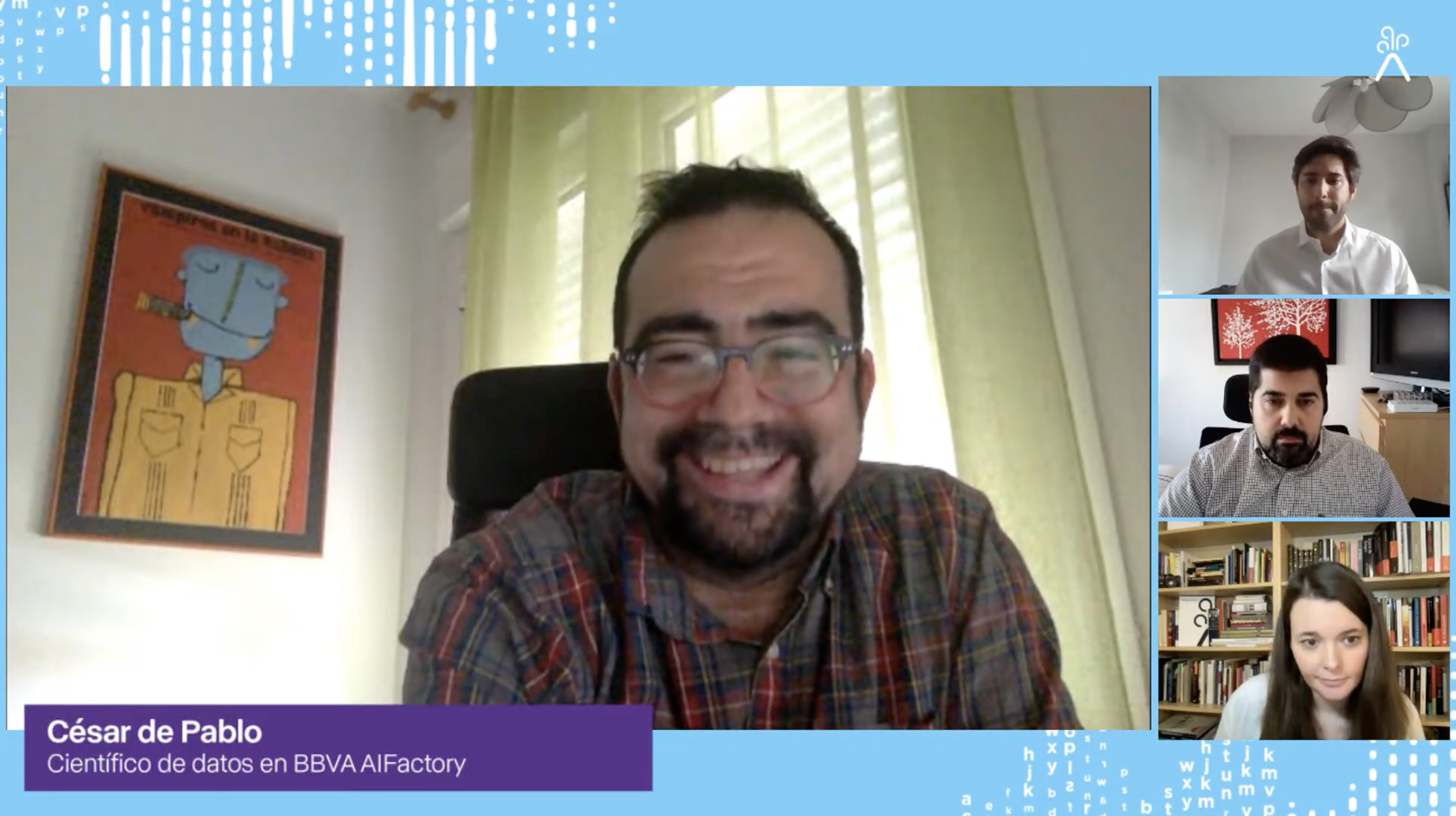
On the other hand, our responsible flexibility based training program allocates a budget to each employee which is divided into three training modalities: basic, individual and extraordinary.
In addition to the above, another noteworthy hallmark at BBVA AI Factory is undoubtedly our commitment to diversity and inclusion. We are aware that in the technology sector there is still a long way to go to achieve true inclusion, be it in terms of gender, age, knowledge, place of origin, culture or beliefs. This is why part of our mandatory training focuses on this topic by offering, for example, courses on unconscious bias. Furthermore, when we publish a job offer we carry out a proactive search for female candidates, who match the requested profile. The aim here is to draw up a balanced list of men and women before starting the selection process.
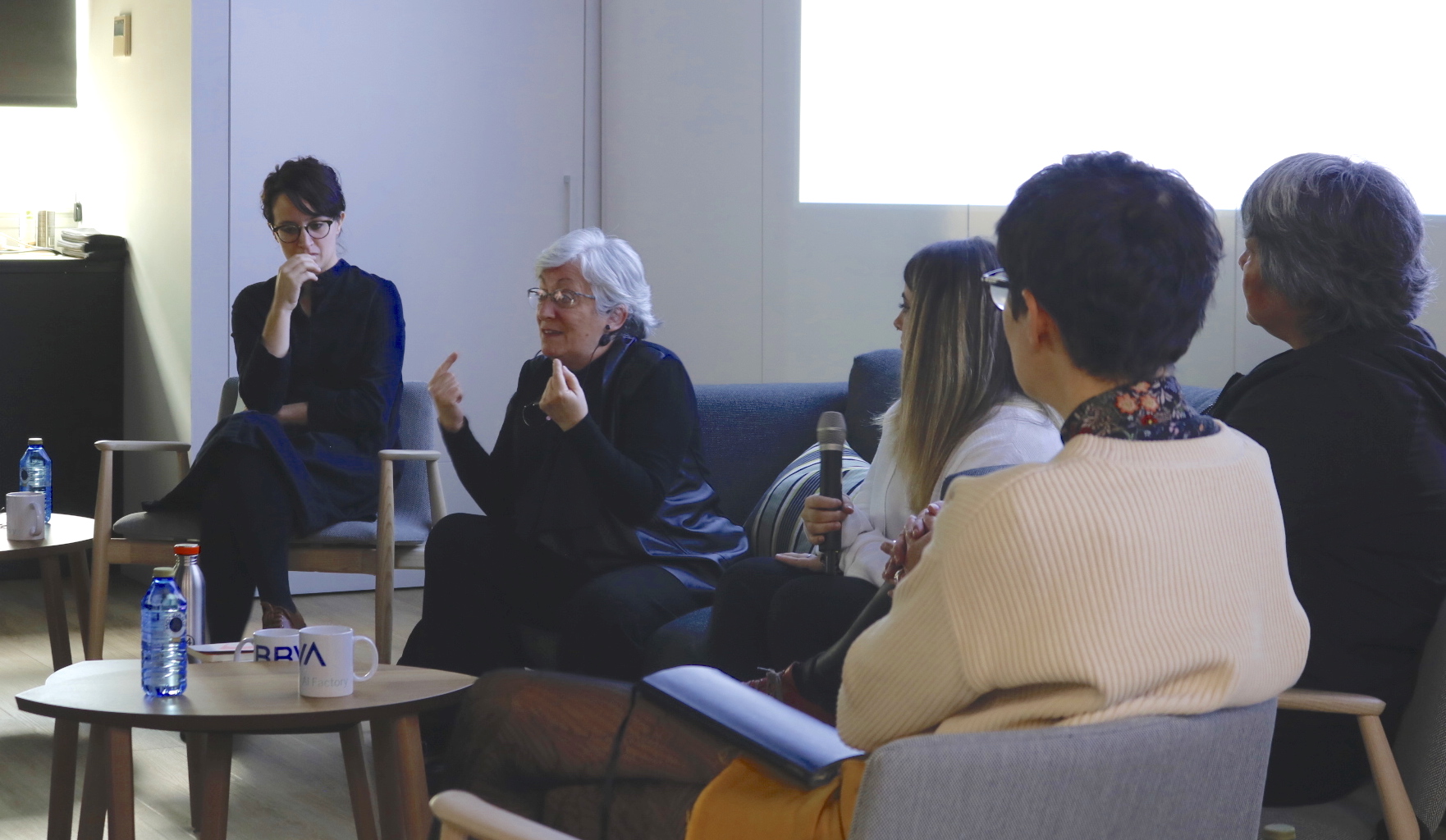
Having more diverse teams also helps us produce higher quality work and mitigates the risk of incorporating biases in our algorithms. During the course of this year we have had the opportunity to participate in tasks to proactively detect and neutralize biases in our artificial intelligence models.
Notes
- The jury for the “100 Best Workplaces for Innovators 2022” awards, presented by Fast Company, is made up of: Saikat Chaudhuri, faculty director, Management, Entrepreneurship, & Technology Program, University of California, Berkeley; Paul Daugherty, group chief executive of technology and CTO, Accenture; Stephanie Mehta, CEO, Mansueto Ventures; Kristin Reilly, chief people officer, Wonder; Jana Rich, founder, Rich Talent Group; Stefan Seiler, group head of human resources, UBS; Jordan Taylor, cofounder and CEO, Medley. ↩︎
- This vision is related to the concept of discovery-driven prototyping and evokes early approaches to data science, in which data scientists themselves proactively explore new product features rapidly. ↩︎
References
- Ray Slater Berry, A guide to Rapid Prototyping. Maze ↩︎